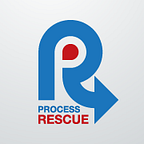So you’re going to transform? Read this first!
The IT department and HR have been crying out for transformation for as long as you can remember, performance is stagnant, and now your shareholders (or minister) agree it’s time.
Word has got out, and there’s a queue of sharp-suited consultants beating down the door to tell you how to do it and why their way is the best. Well, here’s a shock, I’m no different.
But, at least when I tell you that my way is the best, I can prove it with simple logic.
Let us take a short journey back to how you got to this place where transformation is needed. I’m picking that you’ve had several organisational restructures over the last ten years, which have had an initial performance improvement but then regressed back to the same old issues regardless of the structure.
I’m also picking that the spending on technology has steadily grown but nothing has really moved the performance dial. The promised benefits from salespeople and business cases never seem to pan out as well as you expect. Unless, of course, you’re already a pessimist and have scaled back your expectations accordingly!
Here’s the simple reason why that’s happening.
You need the process lens.
Nearly everyone has heard of the ‘People, Processes, Technology’ framework. It’s been around since the 1960’s, sometimes called ‘The Golden Triangle’. Each of the three factors is equal. One cannot work without the other 2 (although, in some cases, technology can be unsophisticated for a time).
In my experience, most enterprises see Process as a component of IT and separately as a component of HR.
In Technology, process is used for surfacing requirements. Business Analysts are sent out into the business to discover how people do things (i.e. process) so that they can come up with sensible requirements to develop or acquire a system to meet those needs. They usually find that nothing is documented or current, and most processes need to be standardised. In some cases, they will find process work done using a bespoke standard and method only the author knew, but it’s usually way outdated.
So, the Business Analyst reaches a crossroads; either they do the process work required to standardise and document (using their own method and standard) or revert to documenting the process from the system perspective rather than from the viewpoint of a staff member doing the work.
This nearly always leads to blowouts in the timeframe and costs associated with the project as the work is underestimated or not factored into estimates at all.
Business Analysts are naturally enquiring and quite adept at giving anything a go. But they’re not Process Analysts, so unsurprisingly, there are many quality issues. Typically, any documentation becomes a ‘point in time’ document and quickly loses its usefulness.
The analyst’s brief is concerned mainly with implementing a system. This results in scope issues as the work falls between the cracks when standardising manual steps. Especially where the technology in question isn’t right for that step. This lets down business users and, therefore, your stakeholders.
In the world of HR, the process is also seen as a subset of their work. Process arises through materials developed for training purposes. It’s usually done by someone seconded from the business with the help of a technical writer and Business Analysts. So, of course, it becomes very technology-focused.
Process should be involved in the People transformation too. Typically HR is tasked with developing a new ‘operating model’. There is no one concise definition of the term, but in the interests of simplicity, I like to think of it as ‘who is doing what’. The ‘who’ is People and Technology, and the ‘what’ is Process. Sometimes Capabilities can be substituted for Process, but that has its own issues (a discussion for another day)!
Without Process and nothing explicitly linking People and Technology, operating models effectively become organisation charts that usually aren’t up to the task required.
So that begs the question…
Who’s in charge of making sure the process works?
Who ensures that rules are relevant and presented in the context of the work being done?
It’s not Technology. It’s not People. We don’t have a Process department, so the answer is NO-ONE!
I’m always interested in talking process, so please get in touch with me if you have any questions.
Thanks
In my next article… here’s something that’s probably controversial to many people…
“If your organisation is managed properly, you should never need to transform.”
